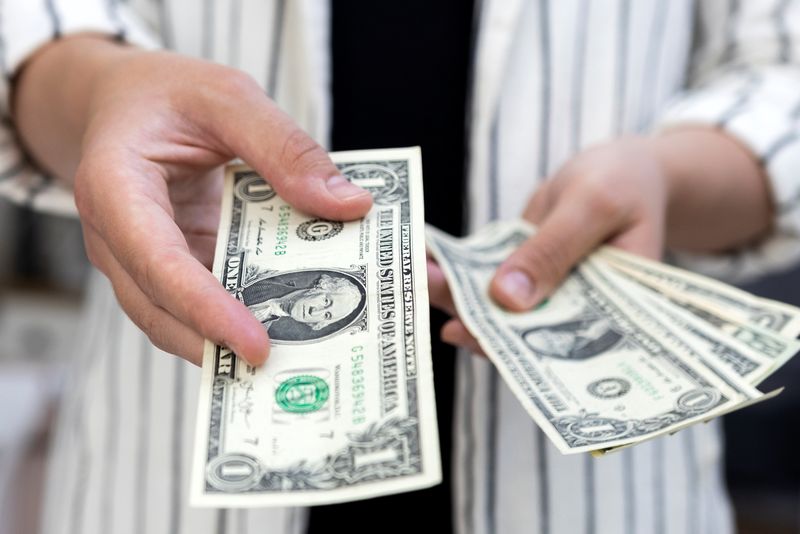(Reuters) -The U.S. dollar scaled a fresh 6-1/2-month peak against other major currencies on Wednesday and the Japanese yen fell to its lowest level since July, driven by so-called “Trump trades” ahead of key U.S. inflation data later in the day.
The dollar is reaping the benefits of Republican Donald Trump’s victory in the U.S. presidential election last week, which sent the U.S. currency to its highest level since May 1 at 106.21 against a basket of currencies.
Investors are pricing in policies of lower taxes and new trade tariffs under the incoming administration, measures seen as inflationary which could prompt the Federal Reserve to curb the extent of its easing of interest rates.
Meanwhile, Republicans inched closer to gaining full control of Congress, which would give the president-elect more power to advance his agenda.
“There is still scope for more dollar gains,” said Mitul Kotecha, head of FX & EM macro strategy at Barclays (LON:BARC).
The full magnitude of the threatened U.S. tariffs on global imports, the potential fiscal stimulus through tax cuts and deregulation, as well as data that points to U.S. economic strength continuing next year, are all supportive of the dollar, Kotecha said.
Focus on Wednesday will be on a fresh read on U.S. inflation, with the October Consumer Price Index (CPI) report due at 1330 GMT.
The core index is expected to have risen 0.3% in October, in line with previous month’s increase.
“Evidence of a pickup in headline inflation amid a steady core CPI-inflation rate might boost the (dollar) even further across the board,” strategists at Unicredit (BIT:CRDI) said in a note, adding that signs of disinflation are unlikely to significantly dent the dollar’s strength.
“A retreat by the greenback, even a partial one, would likely turn into a buying-on-dips opportunity quite soon, given the market sentiment that is currently prevailing.”
Fed Chair Jerome Powell is scheduled to speak this week, ahead of wholesale price data on Thursday and retail sales on Friday.
Markets currently assign about a 60% chance of another quarter-point cut from the Fed in December, down from around 84% a month ago, according to CME Group’s (NASDAQ:CME) FedWatch Tool.
The U.S. dollar index rose 0.1% to 106.12, up for the fourth straight session.
Bitcoin paused its record-breaking climb, down about 1% at $87,428 after hitting an all-time high of $89,998 on Tuesday. Trump has vowed to make the U.S. “the crypto capital of the planet”.
Smaller token dogecoin eased from its all-time high. Trump said Elon Musk will co-lead Department of Government Efficiency and the acronym of the newly created department – DOGE – references the name of the cryptocurrency dogecoin that Musk promotes.
The yen broke through 155 per dollar, the Japanese currency’s weakest level since July 30.
Japan’s wholesale inflation accelerated in October at the fastest annual pace in more than a year, complicating the Bank of Japan’s decision on how soon to raise interest rates.
The euro struggled for support amid political uncertainty as Germany, the bloc’s biggest economy, is set to hold snap elections on Feb. 23, after the collapse of Chancellor Olaf Scholz’s governing coalition last week.
Meanwhile, markets are pondering potential Trump tariffs against Europe, as well as China.

The euro was pinned near a one-year low of $1.059425, and was last down 0.1% at $1.0611.
Sterling dipped to $1.27370, closing in on a three-month low of $1.27190 from Tuesday.
To read the full article, Click Here

